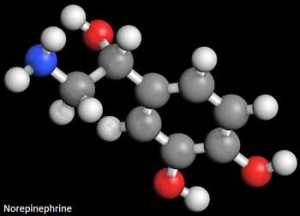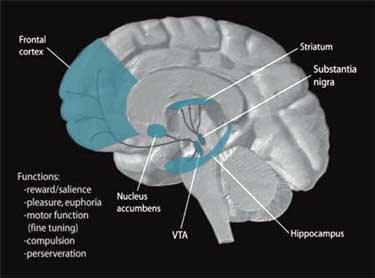



With the FDA clamping down on a major class of opioid drugs used for pain relief by fibromyalgia patients, we’re taking a look at other alternatives.
In the first of a two blog series, we’re checking out ongoing or recruiting (or in some cases, recently completed) fibromyalgia clinical trials to see what the future may hold. There’s no telling how effective these treatments will be, but we do know some big bucks have been committed to see if these treatments work, and that says something. The trials are found in a clinical trials database run by the NIH called clinicaltrials.gov (which includes trials done outside the US , as well. )
We want to emphasize that many helpful treatments will never show up in clinicaltrials.gov because a certain level of funding – either from private sources (usually drug companies) or the federal government – is required that the backers of many drugs, supplements and techniques simply don’t have.
With that proviso, let’s see what drug companies, medical device makers, the federal government and a few others have come up with to better treat fibromyalgia. These are the drugs/treatments that have the best chance of making their way to your doctor’s office in the next couple of years.
Trials of all sorts – from anticonvulsants to dopamine enhancers to muscle relaxants to brain stimulators – are underway. A couple of drugs – one from Japan – and another from the U.S. are new. The big money maker, Lyrica, continues to be the focus of several studies (not reported here), and medical product manufacturers are showing a major interest in developing electrical brain stimulation products to alter brain activity. Some supplements as well as a gluten-free diet are also being tested.
This overview will not include the many mind/body/relaxation studies underway in fibromyalgia.
CENTRAL NERVOUS SYSTEM – DRUGS
Drugs that affect the central nervous system – the site of the central sensitization (pain amplification) – that’s been documented in FM are a major focus. (Studies have shown that pain amplification pathways are over-active and pain inhibition pathways are under-activated in FM. )
Lyrica is one such drug, but we’ll not be covering the ongoing Lyrica trials in this blog.
DROXIDOPA AND DROXIDOPA/CARBIDOPA
- Study Completed
- Sponsor: Chelsea Therapeutics
Droxidopa increases central nervous system levels of norepinephrine. Some studies suggest that increased norepinephine levels could result in decreased pain in fibromyalgia.
Norepinephrine (NE) demonstrates how complex our systems are. A hormone produced by the adrenal glands, when NE hits the bloodstream it excites the sympathetic nervous system – already believed to be over-active in ME/CFS/FM – increasing muscle tension, reducing oxygen flows to the muscles, reducing lactic acid removal – and causing pain!
Within the spinal cord and central nervous system, however, NE can reduce pain through its effects on the dorsal horn of the spinal cord, the amygdala, hypothalamus and other ’emotional modulating’ centers of the brain. Doxepin and amytriptyline both reduce neuropathic pain by increasing NE availability in the CNS.
This study is complete….
A JAPANESE DRUG, NEUROTROPIN, GETS ITS SHOT AT FM (COURTESY OF THE NATIONAL INSTITUTES OF HEALTH )
- This study is currently recruiting participants.
- Sponsor: National Institute of Nursing Research (NINR)
This National Institute of Nursing Research (NINR) is examining the effectiveness of neurotropin, an experimental drug used in Japan to treat pain, in a placebo-controlled, double-blinded, crossover fibromyalgia study.

According to a case report one persons pain and cognitive problems were completely removed by neurotropin
A published 2005 case report suggests the drug may be helpful in chronic fatigue syndrome as well. A 28 year old male suffering from fatigue, body-wide pain, difficulty concentrating, memory problems, frequent urination, etc. quickly received significant help with fatigue, pain, sleep, concentration and memory from Neurotropin. Three months later he was symptom free and had discontinued treatment. Five months later he was still symptom free.
Neurotropin has been called an ‘anti-allodynia’ and anti-pain medication. It is- get this -an extract from inflamed skin of rabbits inoculated with vaccinia virus :). It’s believed to enhanced the pain inhibiting aspects of the monaminergic system in the brain. This system terminates in the dorsal horn of the spinal cord which may be the site of central sensitization in FM/ME/CFS.
Neurotropin has beenreceiving significant animal study recently. It reduced mouse dorsal horn neuronal activity , reduced, in combination with Lyrica, allodynia in mice and neuropathic pain in a rat model. It also significantly reduced neuronal toxicity in chemotherapy patients.
A similar trial is underway to examine neurotropins effectiveness in treating complex regional pain syndrome (CRPS)
ANOTHER ANTI-CONVULSANT – LEVETIRACETAM (KEPPRA) – FOR FIBROMYALGIA
- Sponsor: University of California, San Francisco
Anticonvulsants such as Lyrica and Neurontin are commonly used in ME/CFS/FM. This recently completed double-blinded, placebo-controlled study at the University of California, San Francisco, examined the effectiveness of Levetiracetam in reducing pain in fibromyalgia.
Keppra is mostly used to treat epilepsy but can reduce neuropathic pain and has also been used in autism, Alzheimer’s disease, anxiety and bi-polar disorder. According to Wikipedia it’s generally well tolerated.
A DOPAMINE ENHANCER- ROPINIROLE (REQUIP) IN FM
GlaxoSmithKline’s large (160 subjects recruited from 9 European countries) double-blinded ropinirole study has been underway since 2005, and has been completed.
A dopamine enhancer used in the treatment of restless leg syndrome and Parkinson’s disease, ropinirole or Requip can reduce muscle rigidity and stiffness. Dopamine is abundant in the part of the brain which coordinates muscle movements, and reduced dopamine levels can result in stiff and rigid muscles, which are common in Fibromyalgia.
Parkinson’s Disease, attention deficit disorder, schizophrenia and restless leg syndrome are believed to be associated with reduced dopamine levels in the brain. Decreased dopamine levels have been are associated with increased pain.
Dopamine also affects motivation, reward, arousal and cognition. (Ritalin is a dopamine activating stimulant.) Outside the nervous system dopamine also modulates blood flows – an area of concern in ME/CFS/FM.
MEMANTINE – A GLUTAMATE INHIBITOR
- This study is not yet open for participant recruitment.
- Verified July 2012 by Aragon Institute of Health Sciences”’

Reducing glutamate production worked for Lyrica …Will it work for Memantine in fibromyalgia as well?
Raised levels of glutamate, the primary excitatory neurotransmitter in the brain, have been found in the insula, hippocampus and posterior cingulate regions of the brains of people with FM. Among other things, the insula regulates the autonomic nervous system and determines how to respond to sensory inputs such as pain. An important part of the limbic system hippocampus is found in the deep brain and is particularly vulnerable to long-term stress. Several popular ME/CFS/FM drugs (Lyrica, Gabapentin, Klonopin) lower nervous system activity, and Lyrica and Gabapentin reduce glutamate levels.
Memantine is from a new class of drugs developed for Alzheimer’s that block NMDA-like glutamate receptors. Glutamate induced neurotransmission is believe to destroy neurons in Alzheimers.
This double-blinded, randomized, control trial – which is probably already underway – will assess pain thresholds, pain perception, cognitive state, anxiety and depression in FM patients.
- Dig Deeper: the glutamate/GABA hypothesis for ME/CFS/FM
- http://clinicaltrials.gov/ct2/show/NCT01653457?term=fibromyalgia&recr=Open&rank=39
AN ANTI-ANXIETY DRUG PAROXETINE-CR (PAXIL-CR) FOR FM PATIENTS…WITHOUT ANXIETY
- This study has been completed.
- Sponsor: Duke University
- Collaborator: GlaxoSmithKline
This large randomized, double-blinded, placebo-controlled trial (n=116) determined if the anti-anxiety drug Paxil reduced pain, depression and anxiety, and improved sleep and increased functionality in FM patients without a current diagnosis of either depression or anxiety (!).
Citing the high rate of anxiety and depression in Fibromyalgia ,the researchers are hoping some overlap between pain and anxiety production is present. (They’re following past efforts that found anti-depressants can reduce pain in FM patients who do not have depression.
Will Paxil do the same? This study was completed this year…
EFFECT OF LOW DOSE PROPRANOLOL ON THE AUTONOMIC NERVOUS SYSTEM AND MUSCLE PAIN
- This study is currently recruiting participants.
- Verified March 2012 by University of Aarhus
This randomized, double-blinded, crossover study is on TMJ not Fibromyalgia, but it’s use of propranolol – a beta blocker- to reduce pain is intriguing. Dr. Light found that low-dose propanolol (1/5th – 1/10th normal) improved the ability of ME/CFS patients to stand without symptoms, increased cortisol (often low in ME/CFS) and reduced pain in a small study. He believes low-dose propranolol reduces sensory receptor activity (and warns that normal doses may have the opposite effect. )
- Find out more about low-dose propanolol in ME/CFS here.
- http://clinicaltrials.gov/ct2/show/NCT01333150?term=fibromyalgia&recr=Recruiting&rank=97
Completely New
TD-9855 MASS BALANCE STUDY
- This study is not yet open for participant recruitment.
- Verified August 2013 by Theravance, Inc.

Theravance says their new drug works across a wide variety of neuropathic, inflammatory and osteoarthritis conditions…
This study is listed as safety study for a new drug, TD-9855 simply consists of six people and should be done by the end of this year. The drug company involved, Theravance, however, stated here that the drug has been safely tested and a 375 person trial has begun.
Coming out of Theravances ‘Monamine Reuptake Inhibitor Program’, TD-9855 is a norepinephrine and serotonin reuptake inhibitor (NSRI) being developed to treat chronic pain and ADHD. The company states TD-9855 has shown anti-pain activity across a wide variety of inflammatory, neuropathic and osteoarthritis pain models, and that it, interestingly, enhances the pain reducing effects of morphine. They believe it may help with fatigue as well.
CENTRAL NERVOUS SYSTEM – ELECTRICAL STIMULATION
Much interest is being shown in developing electrical stimulation products that reduce the activity in brain regions believed to increase pain.
DIRECT TRANSCRANIAL (BRAIN) STIMULATION TO ALTER PAIN PROCESSING IN FIBROMYALGIA
- Currently Recruiting
Previous results from this research team suggests that reducing the levels of excitatory neurotransmitters, altering patterns of brain activity (connectivity) and changing the ‘cortical thickness’ of central pain producing neurons using direct transcranial stimulation can produce ‘lasting therapeutic benefits’.
Delivering low electrical currents to the brain, tDCS was orginally developed to treat brain injuries, but has been able to increase the cognitive abilities, as well, including memory and attention span, in health adults. The hope is that tDCS will be able to use the brains inherent plasticity to reduce activity in the over-active pain processing areas of the brain in fibromyalgia
This study, thankfully, will study the long-term effects of tDCS on ‘multiple central nervous system levels’ in fibromyalgia.
http://clinicaltrials.gov/ct2/show/NCT01745003?term=fibromyalgia&rank=22
See another tDCS study that is recruiting below
http://clinicaltrials.gov/ct2/show/NCT01745003?term=fibromyalgia&recr=Open&no_unk=Y&rank=5
LONG TERM EFFECTS OF rTMS IN FM
- This study is currently recruiting participants.
- Verified October 2013 by Centre Hospitalier Esquirol
This long term study will examine improvement after 15 sessions of rTMS in 3 weeks, and then after a maintenance session done every 19 days for seven months. It’ll be considered successful if a 30% reduction in pain occurs. An earlier study found a 40% reduction in pain which slowly dropped over time – hence the idea of doing maintenance doses every 3 weeks or so. This study should be finished by Feb. 2015.
RINCE –“REDUCED IMPEDANCE NONINVASIVE CORTICAL STIMULATION” IN FM
- This study is ongoing, but not recruiting participants.
- Sponsor: Cerephex Corporation
Cerephex has developed an electrostimulation product called Neuropoint they state is designed specifically to treat ‘central sensitivity’ by reaching into the deeper regions of the brain. Cerephex notes that over-activation of these deeper brain regions can generate pain even when no pain signals are being generated by the body
Cerephex’s earlier study had modest effects in FM.
OTHER DRUGS
TARGETING HERPESVIRUSES IN FM
- This study is ongoing, but not recruiting participants.

Are herpesviruses playing a role in FM? This privately funded effort employing an antiviral and anti-inflammatory drug believes so…..Sponsor: Innovative Med Concepts, LLC
This privately funded, randomized, double-blind, placebo-controlled, 16-week study combines an antiviral and an antinflammatory to get at herpes viruses in Fibromyalgia. We’ll be covering this study in more detail in a future blog.
Flexeril
Two studies are looking at different forms of Flexeril, a muscle relaxant.
CYCLOBENZAPRINE ER FOR FM
- This study is currently recruiting participants.
- State University of New York – Upstate Medical University
Cyclobenzaprine (flexeril) is a muscle relaxant and tricyclic antidepressant that is often used off-label to treat fibromyalgia. Cyclobenzaprines muscle relaxant capabilities may be able to reduce muscle spasms while its tricyclic antidepressent characteristics may reduce pain signaling in the spinal cord. This double-blinded, placebo-controlled study will evaluate the extended release form of cyclobenzaprine (Amrix), and besides pain reduction will also evaluate sleep and fatigue.
BEDTIME SUBLINGUAL TNX-102 SL (BESTFIT)
- This study is currently recruiting participants.
- Verified September 2013 by Tonix Pharmaceuticals, Inc.
Tonix Pharmaceuticals has begun a large (120 person) multi-center, randomized, double-blinded 12-week trial to see if a new formulation of sublingual cyclobenzaprine taken at a very low dose (VLD – 2.8 mgs.) at bedtime will help with pain in FM. This study was projected to begin in Sept of this year and end in Dec of next year.
CYMBALTA TAKES A LOOK AT SMALL FIBER NEUROPATHY
- This study is currently recruiting participants.
- Verified June 2012 by University of California, San Diego
This study is going to use skin biopsies (small nerve fiber neuropathy) to assess peripheral nerve functioning to see if patients with or without peripheral nerve issues respond better to Cymbalta (Duloexetine).
GUT AND SUPPLEMENTS
REDUCING GUT PERMEABILITY FOR LESS PAIN IN FM?
- This study is currently recruiting participants.
- Verified January 2013 by Lescuyer Laboratory
The Permaprotect food supplement glutamine, curcumin and other substances purported to reduce intestinal permeability, and the low-grade, chronic inflammation associated with it. This study will determine if gastrointestinal complaints in FM are reduced after using Permeaprotect, prebiotics, probiotics and grapefruit seed extract.
TRIALING A GLUTEN-FREE DIET IN FM
- This study is currently recruiting participants.
- Sponsor: Universidad de Granada
A recent study finding that up to 10% of people with celiac disease go on to develop fibromyalgia suggests that some people with fibromyalga have undiagnosed celiac disease or non-celiac gluten intolerance. No studies yet have examined celiac disease or gluten intolerance in fibromyalgia or chronic fatigue syndrome in a comprehensive manner.
This study will compare the effect of a gluten-free diet with a hypocaloric (low calorie?) diet in patients with fibromyalgia and celiac-type symptoms.
- Dig Deeper – Check Niki Gratrix’s blogs to learn more about celiac disease and non-celiac gluten intolerance.
- http://clinicaltrials.gov/ct2/show/NCT01881360?term=fibromyalgia&rank=45
ORAL IRON THERAPY TO IMPROVE NEUROTRANSMITTER FUNCTIONING
- This study is not yet open for participant recruitment.
- Verified March 2013 by Sanjay Gandhi Postgraduate Institute of Medical Sciences
Sponsor: Sanjay Gandhi Postgraduate Institute of Medical Sciences
We don’t hear much about oral iron but studies have shown fibromyalgia is more prevalent in patients who have iron-deficient anemia. Anemia is of interest because of the low blood volume present in chronic fatigue syndrome and possibly fibromyalgia.
These Indian researchers believe the synthesis of two important nervous system neurotransmitters, serotonin and dopamine, may be impaired by iron deficiency in FM. This three month double-blinded, randomized and placebo-controlled 120 person study will feature one group taking FM drugs (Lyrica, cymbalta, etc.) without iron and one group taking FM drugs with iron (230 mgs of elemental iron). It will be completed by December of next year.
Effect of Transdermal Magnesium Chloride on Quality of Life in Patients With Fibromyalgia
- This study is not yet open for participant recruitment.
- Verified October 2013 by Mayo Clinic
Sponsor: Mayo Clinic
Magnesium deficiency can send muscles into spasm, impair sleep, cause headaches and produce anxiety and magnesium supplementation is common in ME/CFS/FM. This small pilot study (40 women) will gather preliminary data on whether applications of transdermal magnesium chloride over a month can improve quality of life in fibromyalgia.














This was very positive to me. Just to see how much is being done towards more finding some answers is very encouraging….. Thanks for this summary of studies completed, in progress and those that are upcoming…..
Well, I think companies recognize that there’s a big need out there and that comports to the possibility of making some good money 🙂
EXACTLY
Yep. Lyrica – a multi-billionaire drug – must have been a huge eye-opener for the drug companies. That’s, of course, good news for FM….
Cort,
I must be dreaming? Could all these positive studies really be happening? They all seem to center on or around my primary complaint…..pain! Thank you for putting this all together in one place. It is as if every topic that I want to know about and that relates to ME FM CFS is here.
Great reading to come back to over and over again. Too bad one trial only wants females…oh well.
Really….reading this was like being in a Twilight Zone episode, waking up in some parallel universe where they take M.E., CFS, FM, Lyme and spectrum disorders seriously.
Keep the manuscripts coming Mr. Sterling!
🙂
Yes – FM is getting much more attention and everyone with ME/CFS should take note as well – given the overlap in symptoms. I would say pain is my second worst complaint and if I overdo it – it becomes my worst symptom..
I would imagine they would all welcome females given the gender imbalance in FM and that one trial will only take women..
Thanks!
Cort: wow! I, too, never imagined that that many Pharmas & non-ME/CFS researchers were so interested in our pain. It will take me weeks, if ever, to fully a absorb it all. What was of particular interest to me, first is “brain” improvement med (sorry, my brain keeps collapsing.) And the two which impact the dorsal horn of the spinal cord which is the area of interest of very early clinicians
who suspected enteroviruses like Dr. Chia does. Joy
The brain is a major emphasis both from the drug and electrical stimulation standpoint. a lot of work is going into electrical stimulation products and they’re being rapidly improved. It may end up being an important and, from what I’ve read, a mostly side effect free way to treat pain. Cost will be a problem for some but as the benefits become more documented, insurance companies will be compelled to cover it.
Lyrica has been a great help with my neuropathy pains, however, the 30 extra lbs. I gained, is making me very unhappy. Why can they not have a pain pill that helps us control our appetite? instead of exciting it? It’s really dirty pool to help alleviate one problem by giving us another.
Agreed….I don’t know if Keppra – another anticonvulsant would be any different – I guess we’ll find out. If the brain stimulation protocols work out that might be one way to feel better and to preserve your figure :). There are also those other two new drugs…the herpesvirus trial…..and others…
Hopefully some day you’ll be able to have your cake (a good drug) and eat it too…without problems..
Plz i have fms five years ago,my life is suffering,all my activites are stopped
I can participate in these research as patient,i want to be in these trials but how??
If you click on the link at the bottom of most of the trials listed that will take you to a page that will give you contact information. Good luck!
Theravance drug trial for TD 98555 (antidepressant NSRI class) is openly recruiting for patients to take part in phase 2 of the study. Television commercials “Fibromyalgia Research Trial”.
FYI
Thanks Michael
HOW CASN I SHARE THIS ARTICLE WITH MY GROUP?…GREAT INFO!
Absolutely. Thanks
I took Cymbolta for a year and it made my condition so much more worse, not sure about that drug.
I’ve been on Lyrica now for 4 years (300mg a day) and it’s been the only drug so far to keep things tolerable.
Glad to hear Lyrica is helping 🙂
I am currently on cymbolta and lyrica, for my Fibro. I also have osteo-arthritis and on several other meds. I have been on lyrica about 6 years and cymbolta going on 2 years. I am beginning to see some results. I believe and this is just my thoughts that most fibro comes from to much fire power in our brains and when those extra neurons or whatever doctors want to call them are clipped or stopped someway we will be spreading our wings and flying like new birds! Or at least I’m hoping so! Until then I’m reading, reading and praying for a cure.
Thanks Cort for all the info. Here it’s great to see so much in one spot!